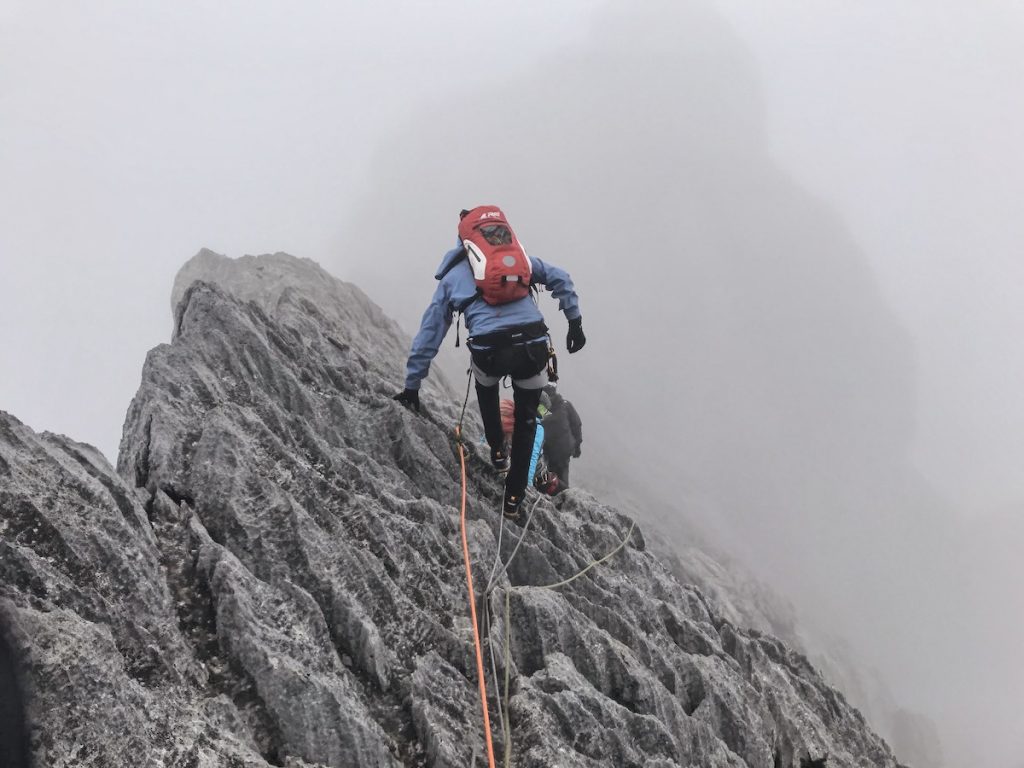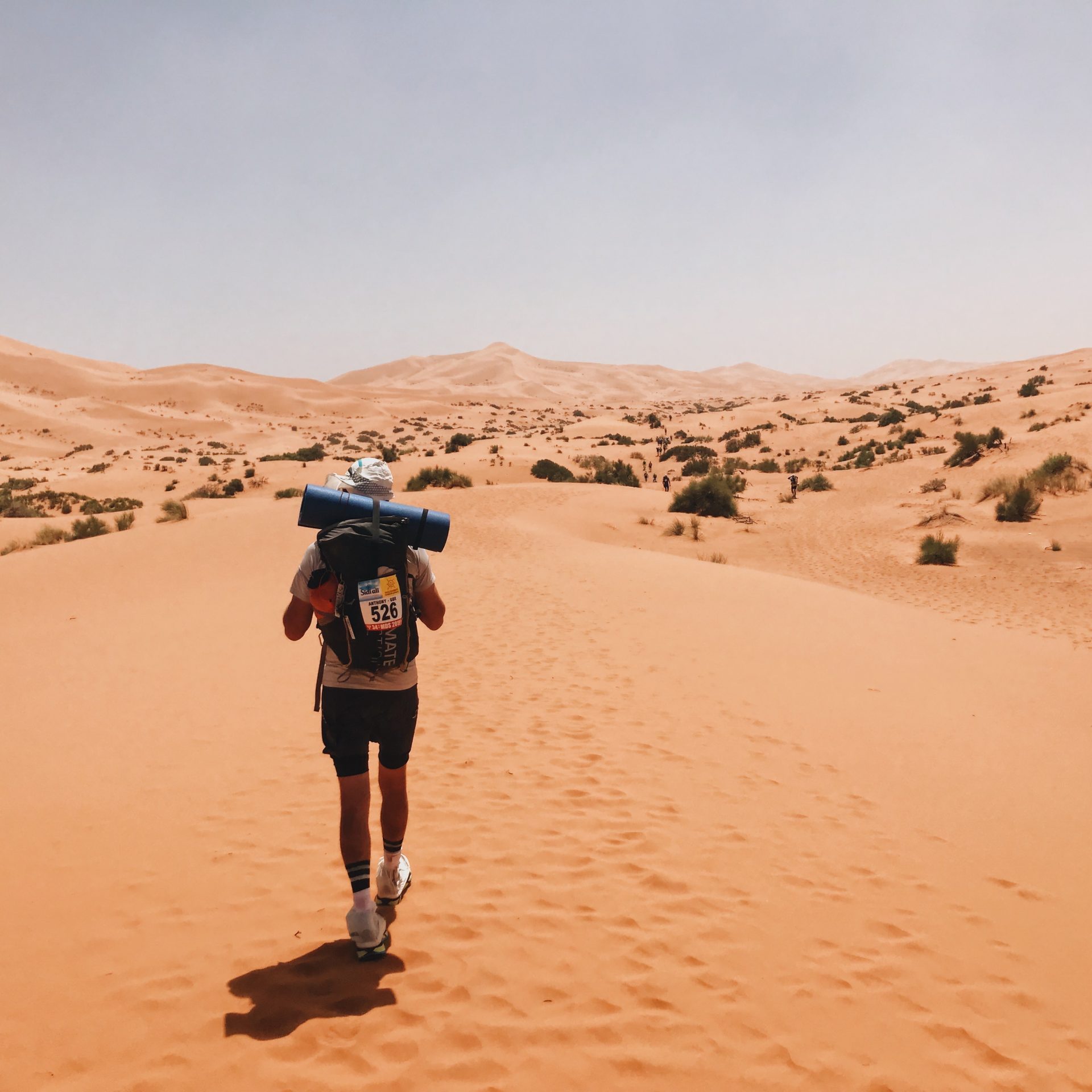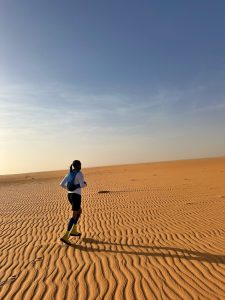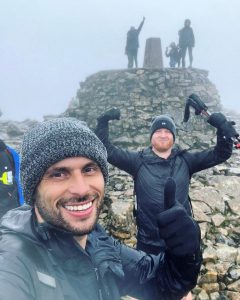With fewer than 500 people having ever conquered the peak, climbing Puncak Jaya might not be the first name you think of when your mind turns to mountain exploration.
Set in the heart of the highlands within Indonesia’s island of Papua, the pretty peak nails down the bragging rights of being the tallest mountain in Indonesia and Australia (it’s complicated, but don’t worry you’ll get it by the end of this post).
With little information on climbing Puncak Jaya, which is also an official Seven Summits mountain; I’ll try my best to paint the picture of what it entails, after summiting it myself in 2019.
Meet Puncak Jaya: The Tallest Mountain in Southeast Asia (& Australia)
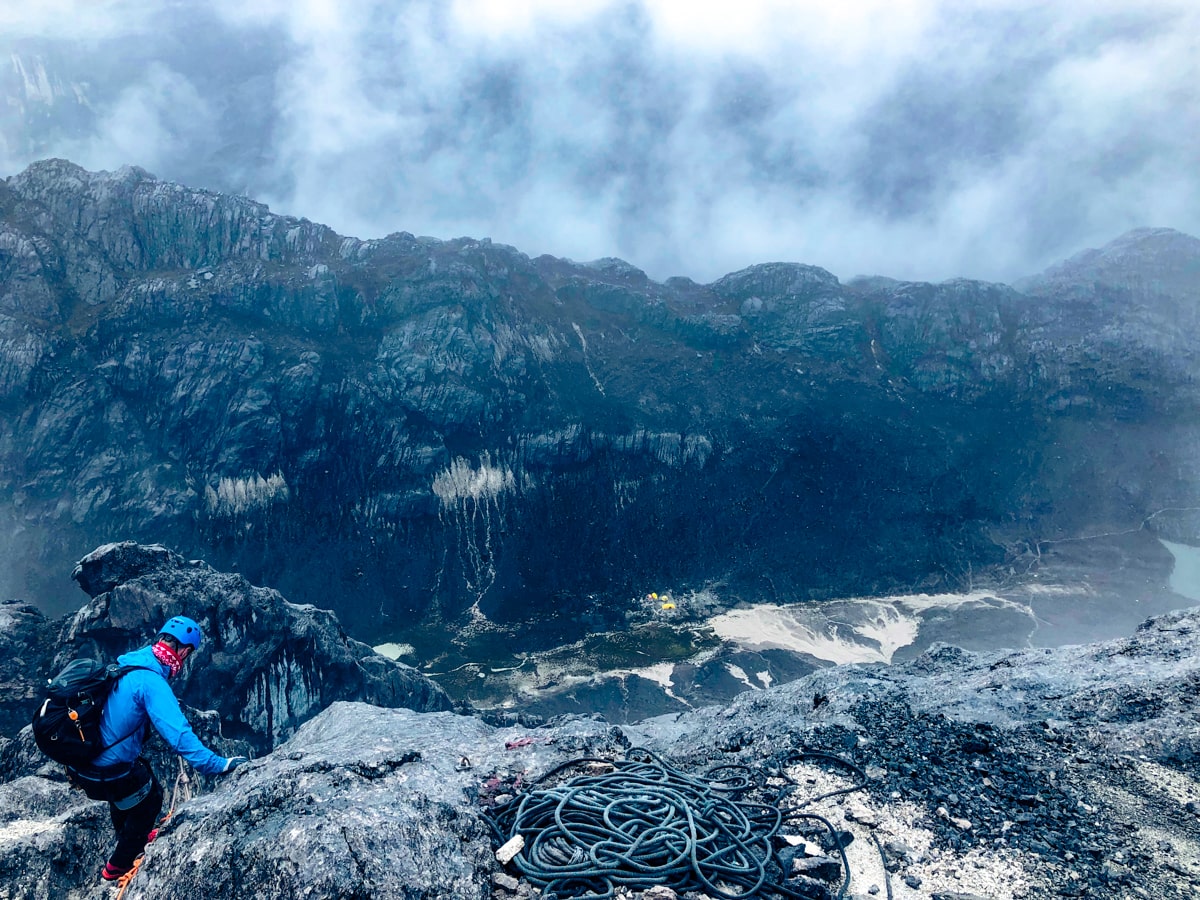
When it comes to major mountain peaks around the globe, most people can name Everest, Kilimanjaro and Mont Blanc straight off the bat. But, the name Puncak Jaya, also known as Carstensz Pyramid will probably have you scratching your head if you’re not heavily involved in the world of mountaineering.
Standing at just over 4,884 metres (16,000 feet), Puncak Jaya is the highest mountain in the region, making it one of the infamous Seven Peaks. The mountain rises from the western half of New Guinea island; the Indonesian half is known as Papua.
The size of this jaggery bump makes it the tallest mountain in Indonesia, and Southeast Asia but also in Australia too.
I can already feel the wrath of reading Aussies screaming; “it’s Kozzie you dickhead” at me. I’m on it, and I’ll explain why Mount Kosciuszko isn’t technically Australia’s highest peak next…
This all might get a little confusing, and you’d be forgiven for thinking so too. Most of us born in my era are used to naming all seven continents and including “Oceania” on that list. Yet that term doesn’t help us much when we’re thinking of continents, as Oceania is actually a region made up of thousands of islands, rather than an official continent.
Continents are geographically defined by their continental plates and the Australian continental plate includes the nation of Australia and the island of Papua – making Puncak Jaya the highest mountain in Indonesia and the continent of Australia.
In short:
- Mount Kosciuszko is the tallest mountain in the country of Australia.
- Puncak Jaya (Carstensz Pyramid) is the tallest mountain in the continent of Australia.
- Indonesia is geographically in Asia, where Mount Everest is the tallest, but the country stretches out to the continent of Australia (which is where Puncak Jaya lives).
Known as “Nemangkawi” to the tribespeople of Papua, the mountain was not known by Europeans until 1623. The first outsider to catch sight of the peak was Dutch Explorer Jan Carstenszoon, from whom the mountain was given one of its alternative names, the Carstensz Pyramid.
It wasn’t until 1962 that a successful climb was made, headed by famous Austrian mountaineer and Tibetologist Heinrich Harrer – known for climbing the north face of the Eiger, his time teaching the teenage Dalai Lama and the lesser impressive accolade of being a former member of The Nazi Party.
Climbing Puncak Jaya is one of the most difficult climbs out of all the Seven Summits for a multitude of reasons. Its sheer isolation in the highlands of Papua presents its own set of obstacles, once including the dodging of violence and kidnapping by tribespeople. On top of this, the steep climb requires the skilled use of rappelling and jumar techniques.
It’s really no easy feat, so I’d recommend preparing well.
How To Get To Puncak Jaya
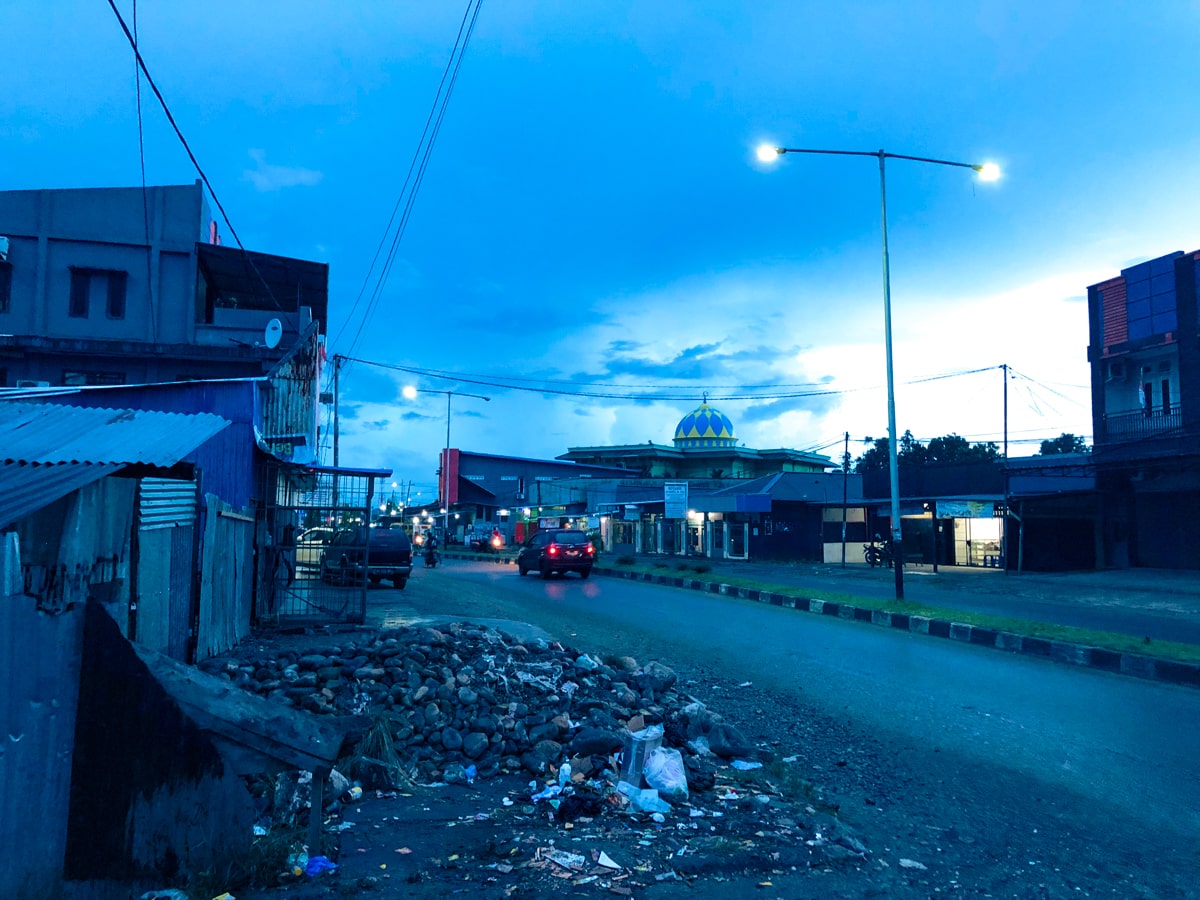
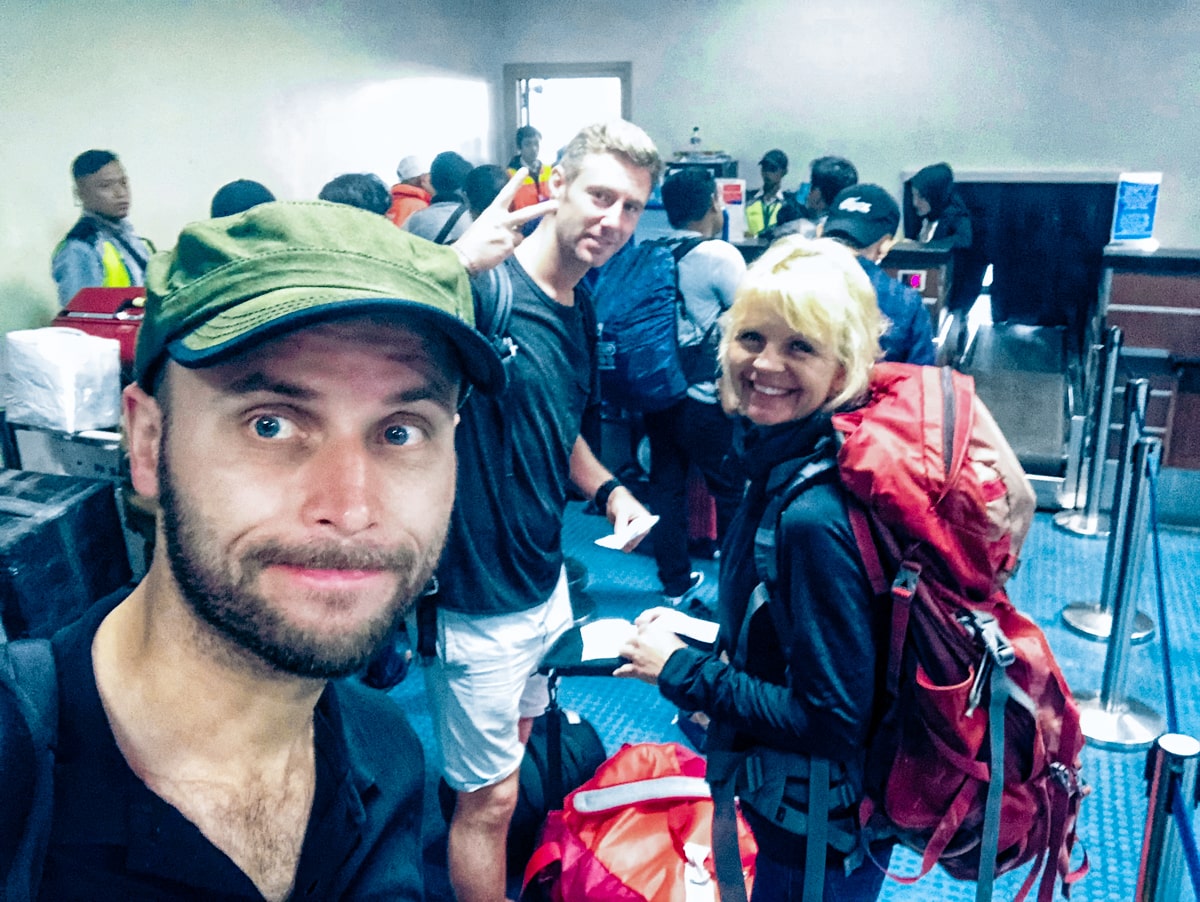
Before attempting the Puncak Jaya climb, you have to make your way to the base camp. This is no easy task for a summit isolated in the highlands of a tropical island and I thought backpacking in Papua New Guinea was hardcore travel!
The first thing you’ll need to do is catch a flight to the Papua town of Timika, on the southern edge of the island and just south of the mountain. This isn’t your everyday commercial destination, and most flights will nearly always have to fly from an Indonesian destination.
The Indonesian flag-carrier flight company is Garuda Indonesia and it is through these that you’re more likely to secure a flight to Tembagapura before taking a 90 minutes drive (provided by your tour company) to Timika Town Centre. To avoid any confusion; Timika Town is outside of the airport, which is in the tongue-twister of a name Tembagapura but the airport is still commonly referred to as Timika.
Bali provides the best jumping-off point to fly to Timika Airport, official name Mozes Kilangin International Airport (TIM).
Once you’re in the town of Timika your route to base camp will largely depend on your guide and your willingness to spend. It used to be common practice, and still is with some guides, to hike your way through the Papua jungle to the base camp, but this is becoming less common due to safety concerns.
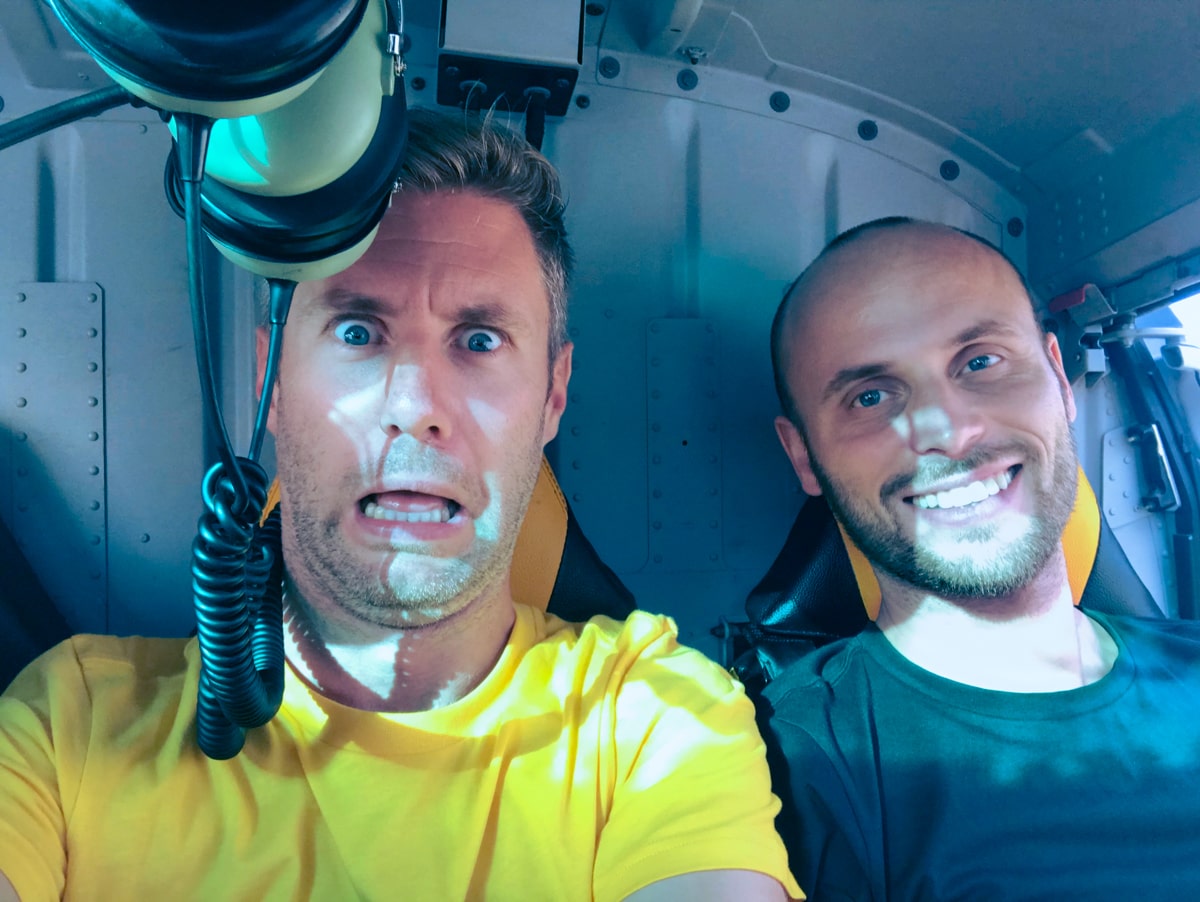
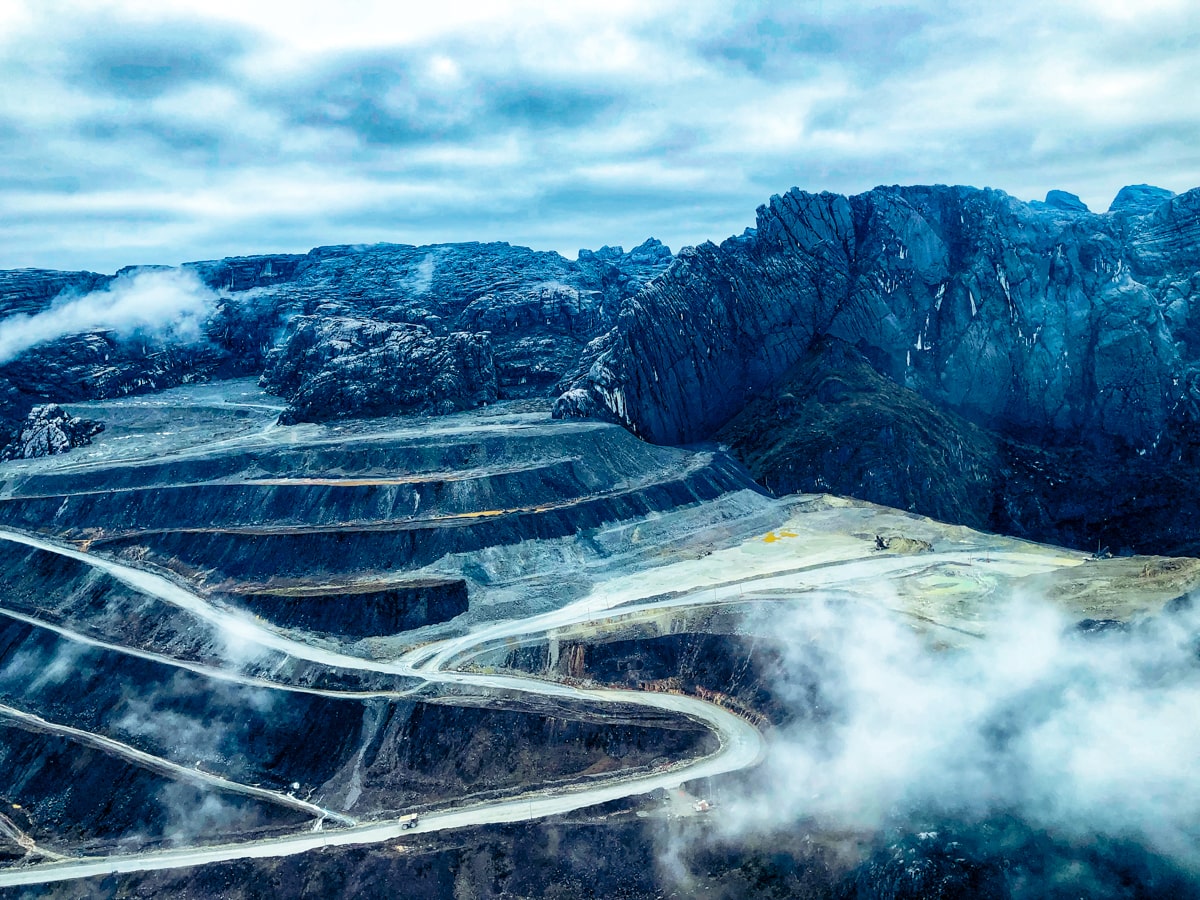
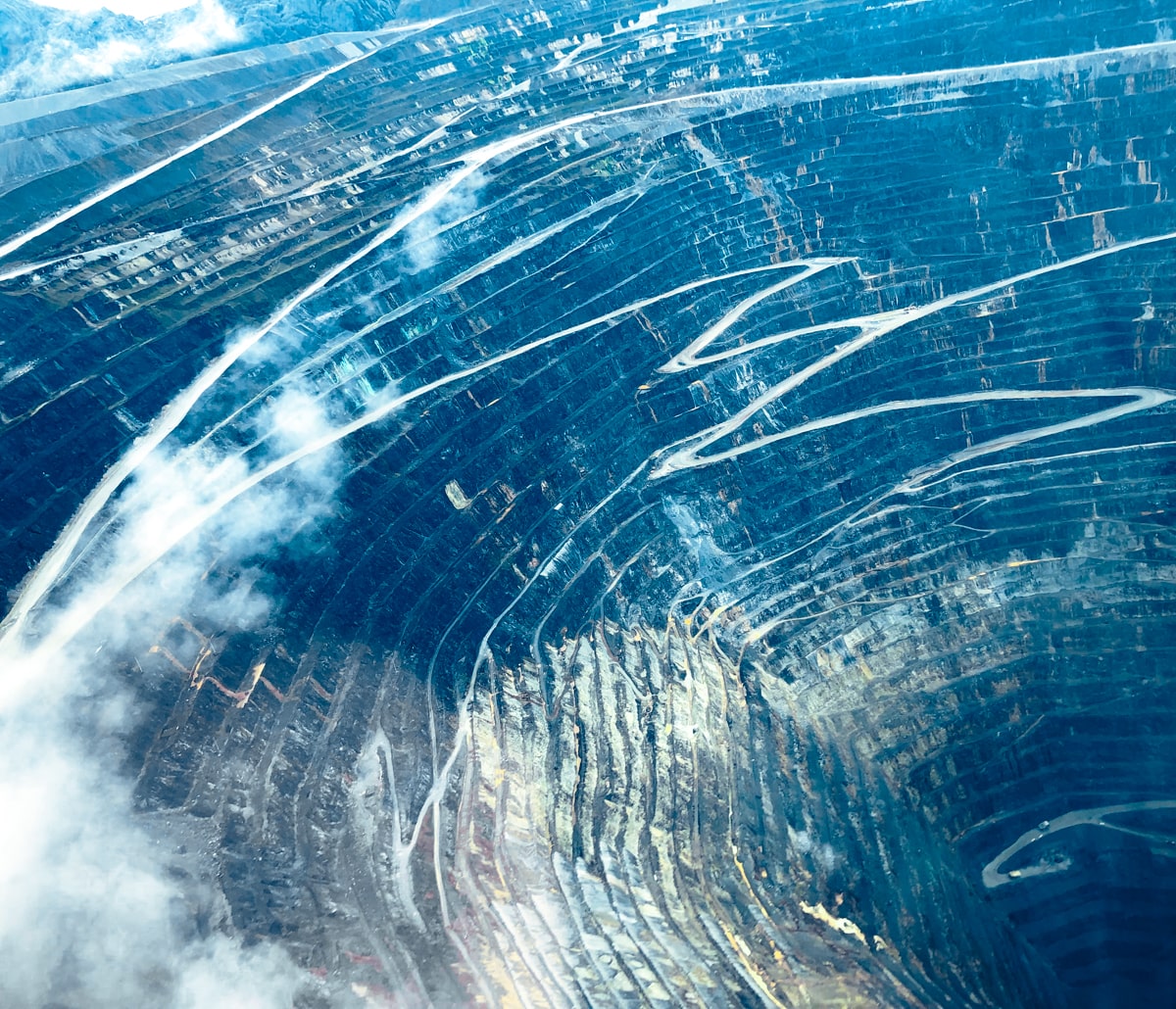
Local guides are becoming more reluctant to make this trek as the indigenous tribes and dissident rebels have noticed they can make a pretty penny by holding hikers hostage until large sums of ransom are paid – previous encounters have even ended in murder when these randoms haven’t been paid.
The other much safer and more expensive option is to charter a helicopter from Timika to the base camp. This, of course, would be far more favourable to many and throws in the chance to see the jaw-dropping landscapes of the jungle, and mountains and fly right over the biggest gold-producing mine in the world.
Best Time of Year To Climb Puncak Jaya
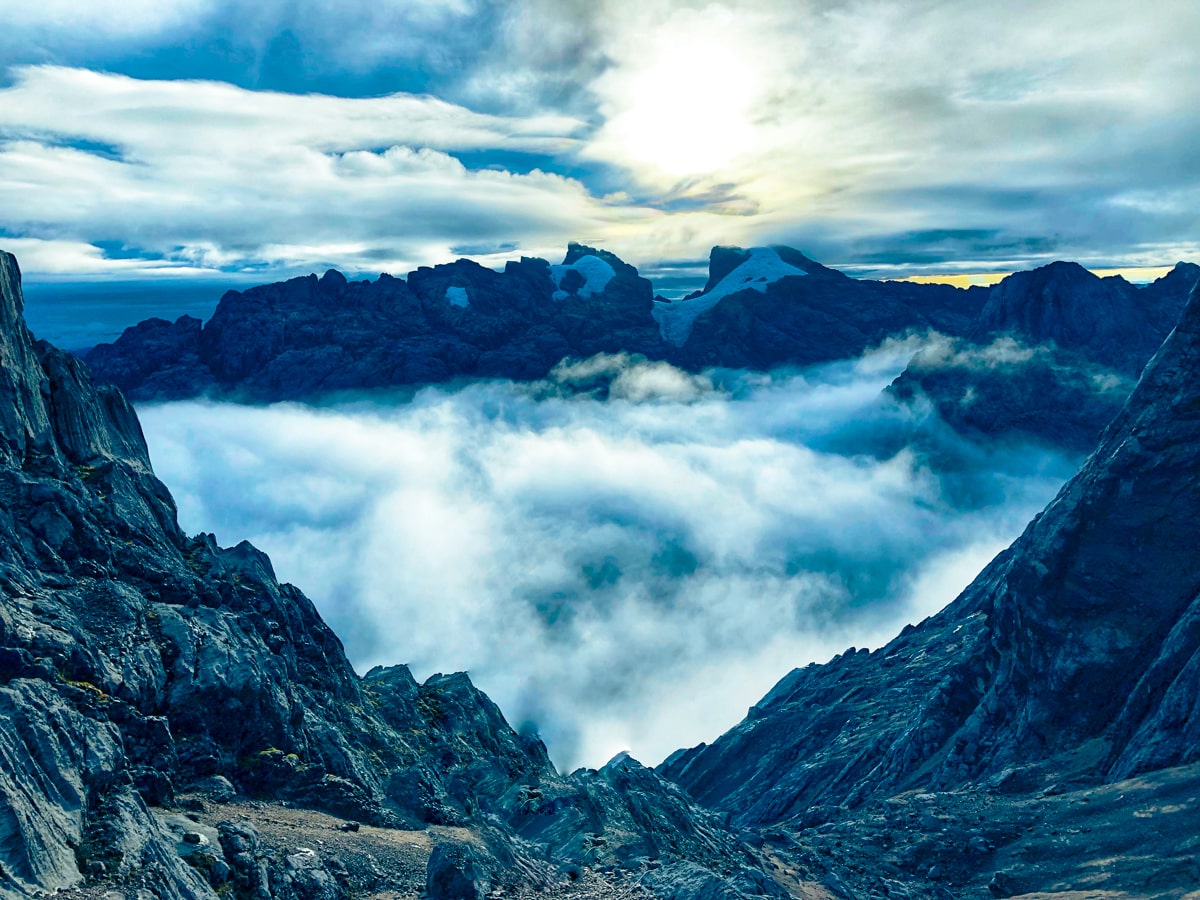
Climbing Puncak Jaya successfully will highly depend on the weather conditions on the mountainside and being so close to the equator, these conditions typically change fast and with little warning on a tropical region mountain.
The positive slant on this makes it an all-season mountain, unlike the likes of Aconcagua (which I have failed to summit twice at the point of this publication, let’s hope 3rd time’s the charm).
That being said, there is still an optimal time for climbing Puncak Jaya; it’s best to attempt the climb during the region’s dry season. The dry season in this area of Indonesia starts in April and lasts until around October/November time.
While it may be dry season at base camp, weather conditions on the mountain itself can jump from dazzling and sunburning rays to whipping winds and slippery, menacing rainfall (or even glacially ice) near the summit.
The main issue here though is the rain, as it’s a very technical mountain and attempting the climb in dryer conditions makes a much safer climb with a higher chance of a successful summit.
Can You Climb Puncak Jaya Independently?
The short answer to this question is both no and why would you want to?!
You’ll need to get a permit that’s been granted by the centralised government from the Indonesian capital of Jakarta to make the climb in the first place. These are tricky to get, but tour operators will guide you through the process and help you fill in the unruly paperwork.
The physical climb to the top of Mount Puncak Jaya is one that demands a high level of skill, and without the knowledge of rappelling and jumar climbing techniques, you are doomed to fail without a guide.
Cost of Climbing Puncak Jaya
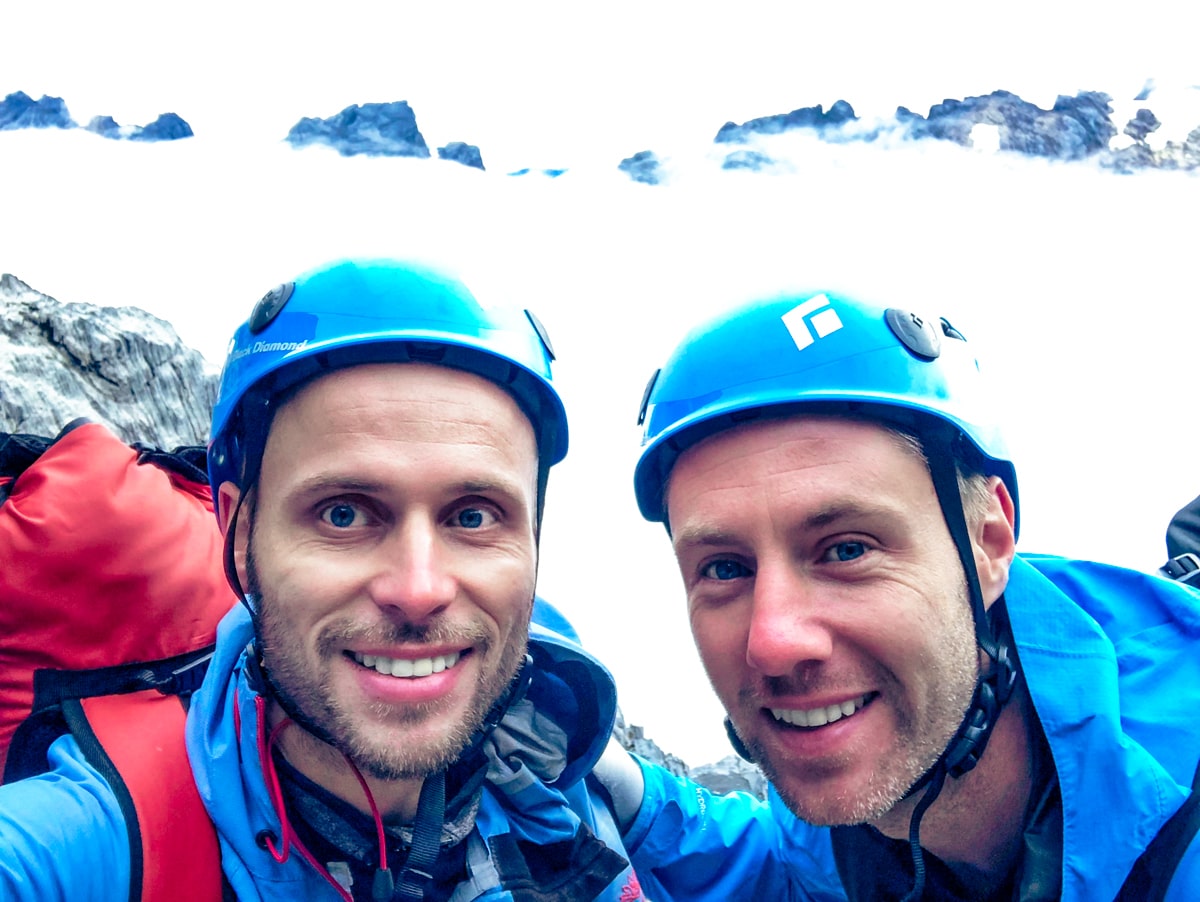
Climbing Puncak Jaya isn’t exactly a cheap hike like the DIY climb of Japan’s Mount Fuji. In fact, it might well be one of the most expensive for you (it was for me and that’s with an amazing discount). But, for those who believe in the notion, the satisfaction of successfully climbing one of the seven summits and such an elusive mountain is absolutely priceless.
It’s not uncommon to be quoted a fee of $20,000 USD per person, sometimes higher. Shopping around and doing a little in-depth research means you may find a local tour operator that will quote you closer to the $8,000 USD mark.
My mate Johnny found this smashing deal with the company Summit Carstensz, but it took him a lot of shopping around and grey hairs to find a price this impressively low.
3 Routes For Climbing Puncak Jaya
There are three distinct routes to climb to the peak of the Carstensz Pyramid, but most opt for the “normal route”. Ultimately, your guide will choose which route you will take to the top based on the day’s weather conditions and your own climbing abilities.
Normal Route (also known as Harrer’s Route)

The most common path to the summit of Puncak Jaya is the route first-ever made by Austrian mountaineer Henrich Harrer and his team in 1962. The total ascent and descent along the “normal route” takes between 12 and 15 hours.
It involves climbing the 600m rock face to the top of the ridge and then traversing along the jagged cliff before using the fitted ropes to scale the extremely steep rock face. This is of course, what I, a mere pleb mountain climber out of his depth, did – but I thought I’d list the other options for any badass pros out there.
East Ridge
The East Ridge route is considered to be the medium-difficult route to climbing Puncak Jaya. The ascent on the East Ridge route is far longer and requires a little more scrambling over sharp rock. With East Ridge, rockfall is also a common problem, and the pathway up the mountain is far more narrow than the other routes you can choose.
The American Direct
The American Direct route is the most challenging when it comes to climbing Puncak Jaya but, as the name suggests, the most direct. A very exposed route, the American Direct takes a direct path up the mountain instead of traversing along the ridge that leads up to the summit.
This route does get more difficult as the climb goes on, with the hardest being the steep Carstensz headwall. This route certainly isn’t for the faint-hearted and will often only be attempted by seasoned climbers.
Packing List for Climbing Puncak Jaya
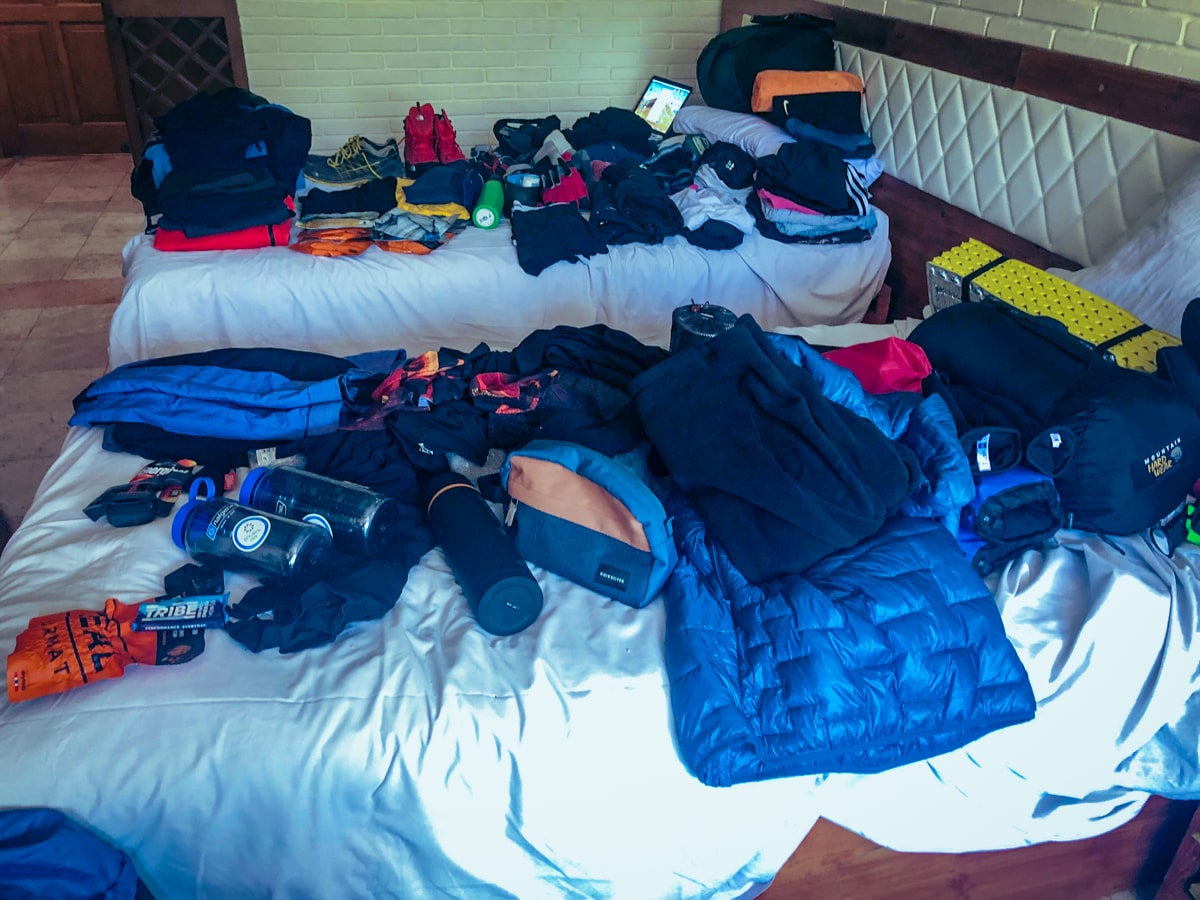
When it comes to climbing Puncak Jaya you need to get the right balance between packing too much and too little, especially when it comes to your summit bag. This is a much shorter expedition to the longer hikes of a mountain that I and others reading this have climbed, so you can get away with more comfort at base camp.
Puncak Jaya offers some of the most difficult climbing in the world for those leaving the ‘beginner’ level and attempting to move on to the next – this, combined with its tropical location will affect the type of gear you need.
You can rent some of the gear when you get there, though it’s good practice to bring your own along so that you are more comfortable. There’s a small mountaineering shop in the town of Timika where you are also able to pick up some last-minute supplies before the ascent, but it’s pale in comparison to the likes of options in Kathmandu or Chamonix.
Being such a small town, supplies aren’t always guaranteed, so ensure you double and triple-check your packing list before you leave.
Here’s an idea of what you might need to pack for climbing Puncak Jaya.
Hand and Headgear
- Hard-Wearing Gloves – A set of hardy gloves comes in handy for traversing the jagged rock and crossing the Tyrolean traverse and rappelling.
- BUFF Headwear – For light insulation under your climbing helmet, protecting you from the sun and excessive sweat.
- Fleece hat – These can fit under your mountaineering helmet for slightly windier parts of the mountain.
Camping and Trekking Gear
- Sleeping bag – Rated to at least 20 F (-5 C)
- Inflatable mattress – Getting a decent bit of shut-eye is key before the climb and mine was heaven, while an annoyed Johnny (who didn’t take one) had to sleep over a huge jagged rock in his back.
- Water bottles – Two 1-litre bottles are best.
- Headlamp – With plenty of extra batteries.
- Summit Bag – You can see mine in the featured photo at the top of this post. Make sure it’s waterproof and hugs your body well.
Climbing Equipment
- Climbing harness – These should be fully adjustable with leg loops
- Locking carabiners – Locking carabiners should be large in diameter.
- Six standard oval or D-shaped carabiners – these will again help with rope-based climbing.
- Ascenders – These will help you ascend any fixed ropes you find along the way.
- Daisy chain – To attach to your ascenders.
- 20ft of 6mm accessory cord – Your guides should help you rig all your cords together beforehand.
- Figure-8 rappel/descending device – This will be used for the larger ropes on your way down.
- Climbing helmet – Ensure it is lightweight and can fit over a thermal hat. Your climbing company can rent you one, but it’s best to have one that fits your nogging perfectly.
- Jumar – Ever heard of one? Neither had I and to be honest, I wish I had prepared and used them more often instead of last-minute fighting with my rented jumar.
- Technical Climbing Boots – Puncak Jaya is incredibly slippy in parts. Don’t scrimp on shoes for this mountain.
- Tropics-Friendly Socks – Too thick will be uncomfortable and unnecessary for tropical weather.
- Base Layer Pair – Try and get a lightweight pair for climbing Punck Jaya.
- Hiking Pants – I bought a couple with strong material, which helped combat scrapes and bruises as I bashed myself off the mountain a lot!
- Hardshell Jacket – This will come on and off as the weather changes often but you’ll be happy you have it.
- Rainjacket – It rained hard for a 2-hour period for us and again later on in short bursts.
For what it’s worth; I rented pretty much all of the above from Summit Carstensz. If I was to do it again, I’d have bought my own gear and practised more – I was really out of my depth up there and I’m incredibly lucky to be able to tell the tale.
Medical & Personal
- Sunscreen – SPF 30 or higher, reapply often!
- Lip balm – SPF 30 or higher, also applied regularly if you have sensitive lips.
- Insect repellent – Small bottle for trekking through the lower parts of the climb.
- Toiletry kit – Toilet paper, toothbrush, and toothpaste will keep your hygiene tip-top while you’re making the climb.
- Small personal first aid kit – Guides will have a more comprehensive first aid kit, but it’s a good idea to have your own too.
- Imodium – The life-saver of embarrassing toilet disasters on the road. It’s so good that I wrote a poem about its glory.
Is Climbing Puncak Jaya Safe? (+ Fitness Levels Advice)

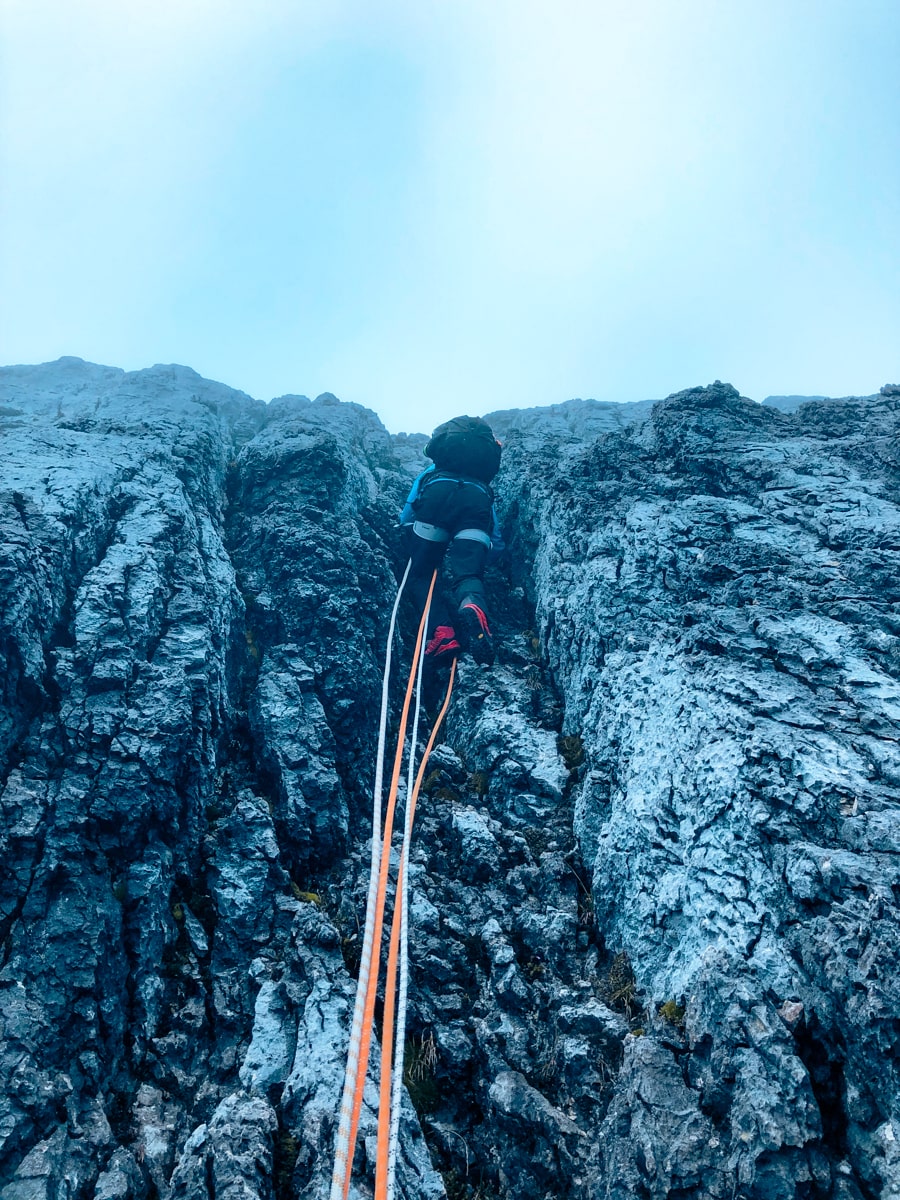
It goes without saying regarding a Seven Summits mountain of this technicality – climbing Puncak Jaya is not without its risks.
It is also no exaggeration to say that climbing Carstensz Pyramid has its own unique and quite real dangers. Puncak Jaya/Carstensz Pyramid is made up of sharp jagged rocks, and sheer rock face climbs, so much so that the whole climb will require roped assistance – this should be an indicator of how hazardous the climb can be.
It’s not so much the altitude of the climb that commonly poses a threat. It is more the complexity of the climb and the isolated location away from cities, towns and villages. Two people recently died on the climb, put down to rockfall and another incident where the climber succumbed to hypoxemia where oxygen levels become thinner.
Where your safety becomes even more unpredictable is if your trip takes the hiking route through the jungle paths to the base of the mountain. With dissident groups and local tribes carrying out random acts of kidnapping, hostage-taking and extortion, it’s not quite the walk in the park you would like before beginning such a hazardous climb.
But the mountain itself? Climbing Puncak Jaya is pretty much all ropes and descending the mountain is actually 10 times more terrifying (and trickier) than going up it. I’ll hold my hands up here and say that I bit off way more than I could chew.
I don’t humblebrag when I say this, or that it was last minute…I had never abseiled in my life and I did it for the first time climbing Puncak Jaya on the most monstrous of drops. You shouldn’t do this if you can avoid it.
In terms of fitness, you don’t want the burden of being sluggish and having poor cardio on this challenge so a decent level of fitness is required. I had completed The Marathon Des Sables race a month prior to climbing Puncak Jaya, so my fitness levels were fine, it was the technical part of the climb that I mainly struggled with.
Travel Insurance vs Extreme Sports Insurance for Climbing Puncak Jaya
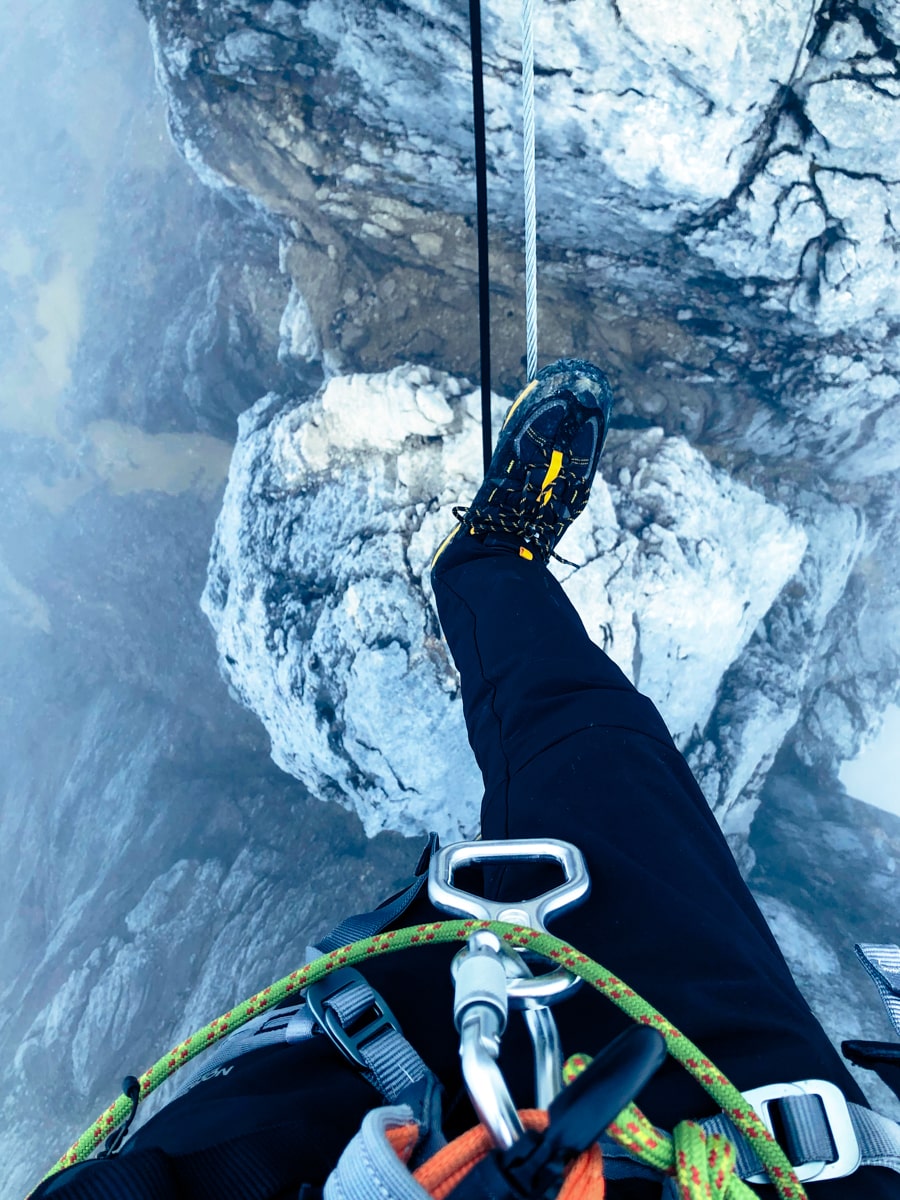
Usually, a trusted travel insurance company would be enough to cover your trip, but when you’re scaling the highest peak in Indonesia, this simply won’t do with most of them. With higher risks and the potential for danger, you’ll need an extreme sports insurance policy to have your back.
Although you will undoubtedly end up paying far more with this kind of policy, it’s better to be safe than sorry.
If you were to require hospital treatment, travel insurance may not pay out if it was the result of climbing Puncak Jaya. Whereas, an extreme sports insurance policy would – and being at the wrong end of a hefty Indonesian hospital bill is not where you want to be, especially when you’re likely to need helicopters off the island of Papua and to the more built-up mainland (which is relatively underdeveloped).
With such a hazardous climb in unpredictable circumstances already ahead of you, extreme sports insurance is essential when you’re planning on climbing Puncak Jaya, but your tour company takes care of that (and if they don’t, they are cowboys).
Climbing Puncak Jaya: My Experience of Summiting The Highest Peak in Australia
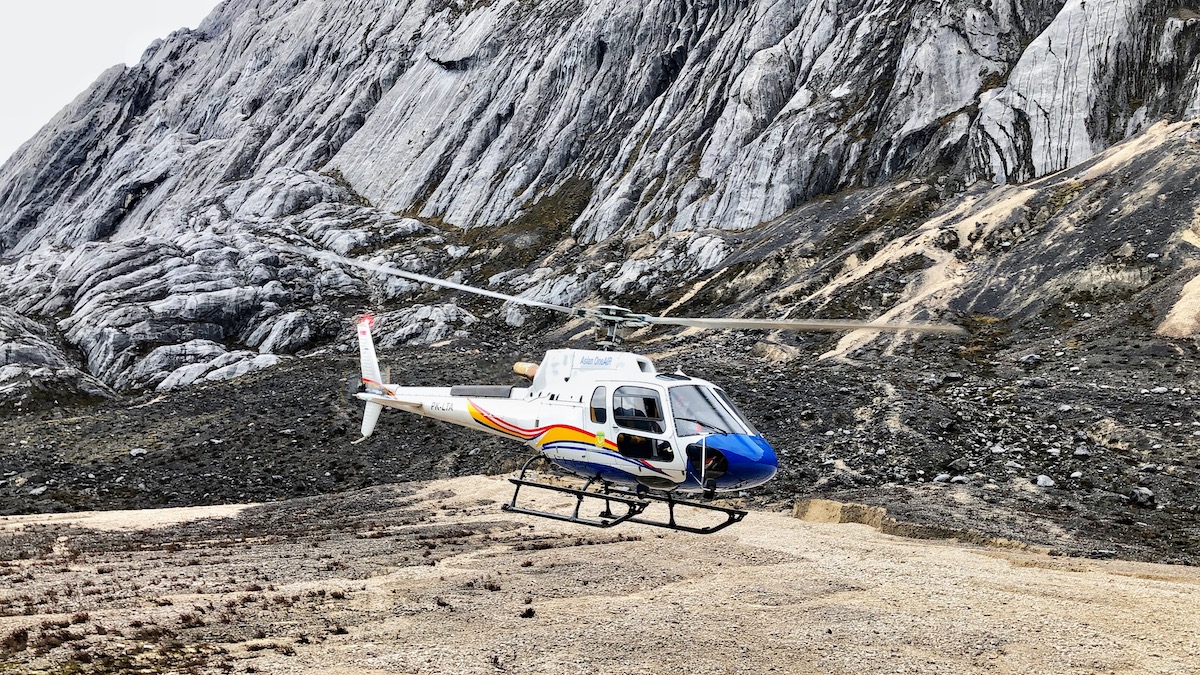

Johnny and I took a red-eye flight at 1:30 am from Bali to the region of the mountain Timika for $590, courtesy of Garuda Indonesia, speculating about whether the blonde lady on the flight was the Norwegian who we were set to climb Puncak Jaya with.
We confirmed with an introduction that she was indeed a member of our team as our hotel picked us up to go and meet the staff of Summit Carstenz.
Blessed with a much-needed positive, strong and fun energy, we knew she’d be the perfect company for the occasion, and she turned out to be an absolutely stellar woman (who only “failed” a Mount Everest summit due to her guide getting sick on the final day. Gut-wrenching!)
Later that afternoon, the guides visited our room to check our gear. After seriously upping my mountain experience recently, this was the first time I’d felt quietly confident with my equipment since the start of this hard mountain climbing journey on Mount Elbrus in Russia.
I felt that I’d come a long way from the novice who would tip his head like a curious Labrador when asked about important mountain gear, by an understandably flustered guide.
I passed my kit exam with maybe a B+ and agreed to get better shoes for climbing Puncak Jaya at a local store. Annoyingly, I had better shoes back home but forgot to pack them!
We were informed during the briefing that if the weather was clear in the morning we would be flying into base camp.
After breakfast the next day, we took our bags to the airport and waited for the 6-9 am window to open up and were happily greeted with the news that the helicopter had given us the green light at 8 am, to throw our bags on and get going.
My stomach jumped, “Operation; climbing Puncak Jaya” was officially underway.
It turned out that West Papua is home to the largest gold mine in the world, coining a cheek-puffing $15 million USD every DAY and we flew directly over it – a massive, striking crater sunk into the ground, that we flew over en route to base camp.
We really were in the middle of nowhere. The lack of safety and the logistical nightmare of getting to Puncak Jaya made it easy to see how it’s not just the high expedition price that keeps people away from this mysterious mountain.
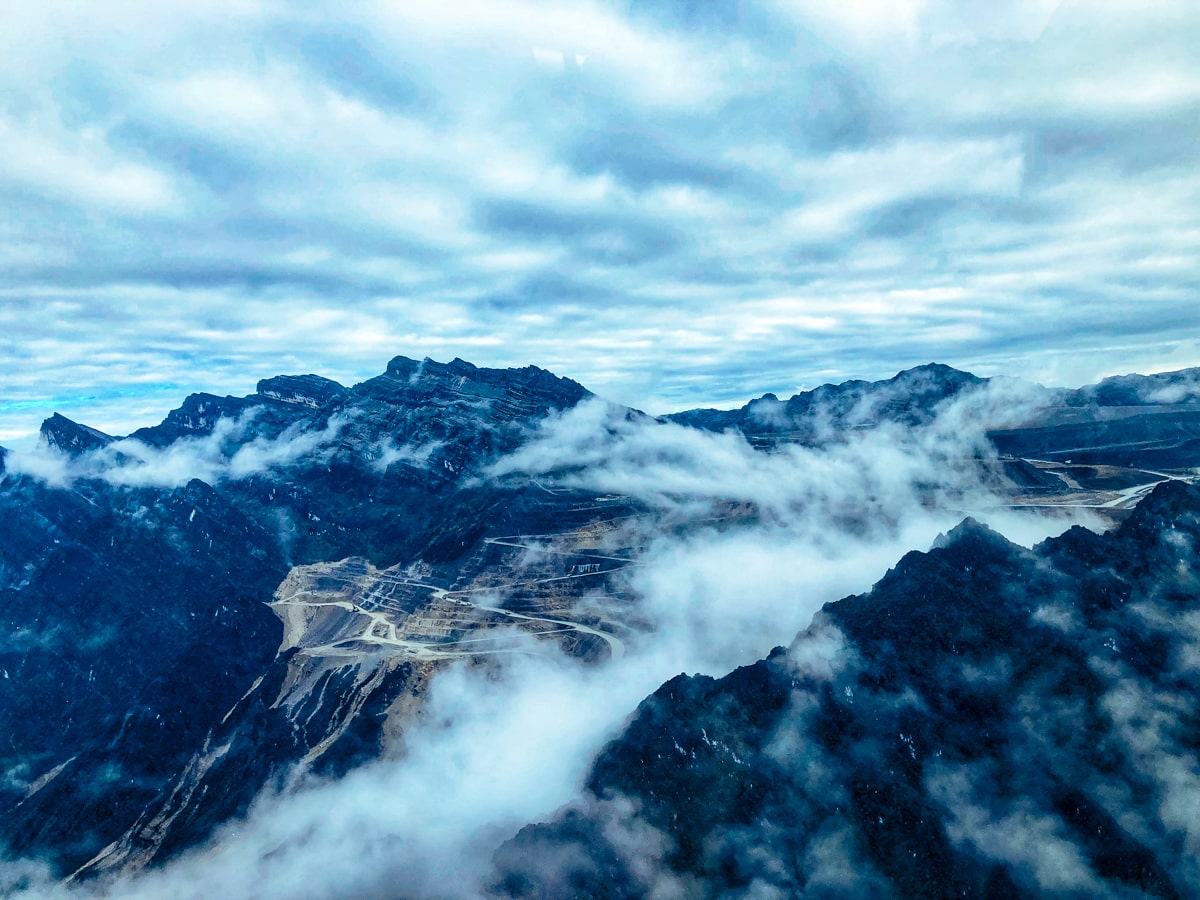
Upon touching down from our scenic helicopter ride we met our porter and guide. Just a few hours later, we were rope training – the very first time I’d used a jumar (a specialist rope-climbing tool) to drag myself up and over large rocks.
I did a double-take on the way back as our guide told us that we would be setting off to the summit in the middle of that very night, weather permitting.
Excitement and nerves kicked in even more. I’d have to learn a lot as I went along, but I was relieved to know that we would be going for it right away, and potentially cutting down our anxiety-laden waiting time on the mountain.
We got to bed around 7 pm and woke up at 2:15 am, with coffee and peanut butter sandwiches as our early, pre-climb breakfast.
Headlamps on, we marched in unison for our nighttime climbing Puncak Jaya expedition. The rain that had been hitting us hard upon arrival had disappeared, the conditions were favourable, and only human error was standing in the way of our success.
The uphill climb with ropes was every bit as saucy as I thought it would be, with jagged rocks biting into my hands as I grappled with them, trying to clamber over them.
Not the most graceful of techniques – think Bambi on ice… but on a mountain.

I was absolutely right when I was concerned that I’d be out of my depth here, but this was no time for trepidation – I simply had to focus, learn from any mistakes, trust in myself, and commit.
What helped was that there were only three of us (four including our guide) on the whole mountain, so there was no human traffic to worry about or bottlenecks to navigate through.
I actually learned more from our new Norwegian friend, Merethe (pronounced “Marieta” in English), than I did from him and I’m eternally grateful to Johnny for teaching me a figure-8 knot on the spot during a really difficult and terrifying part of the mountain, where the guide expected us to do a move that was tantamount to a Matrix fight scene over a large gap between two rocks.
Surprisingly, the infamous rope bridges didn’t test my nerves as much as the abseiling. I was even lucky enough to get a point-of-view shot from the other side as a nice memory – take a look for yourself…
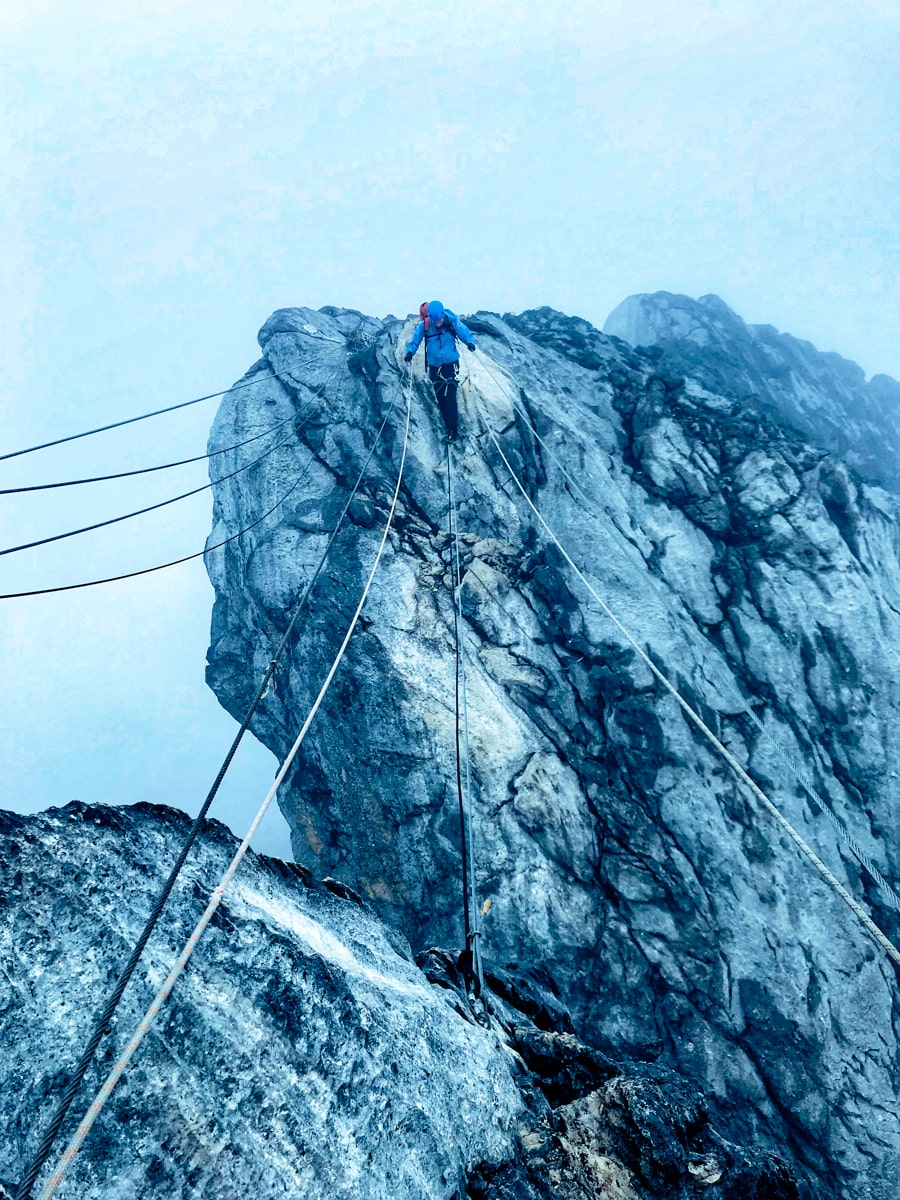
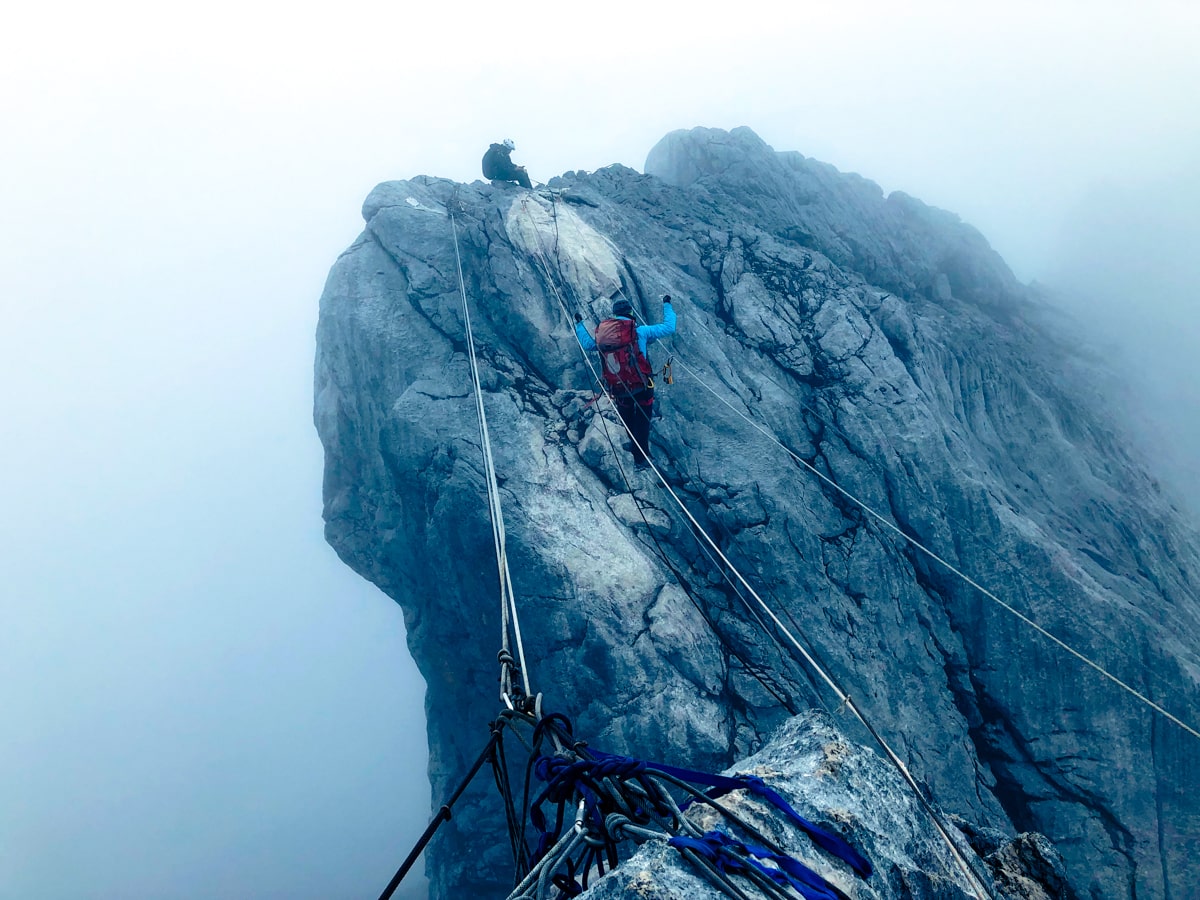
Five hours after stumbling, jumarin’, scrambling and climbing Puncak Jaya, we were standing proud on the summit, 4,884 metres high. The highest point of continental Australia and the region of Oceania – a beautiful feeling, especially after the 1st failed Aconcagua heartache the year before.
But reality suddenly hit and pragmatism killed my fleeting moments of romanticism. We still had to get back down, and if dragging myself up 90-degree angles was tough, going back down safely was sure as shit going to be no picnic.
I was about to lose my abseiling virginity and I was to do it coming down a Seven-frigging-Summit. Typical of me, trying to run before I can walk. I hoped that my luck wouldn’t run out.
Tiredness got to me somewhat, and momentary lapses of concentration could have been catastrophic as I lost control of myself during a dead drop abseil, but I managed to fight and claw myself to safety and regain my composure.
Mount Elbrus was the hardest physical thing that I’d ever done (I did it unfit and with a chest infection) and Marathon des Sables remains a close contest, but climbing Puncak Jaya was a different kind of difficulty, where I had to be successful in mind over matter and remain somewhat calm in order to get down safely.
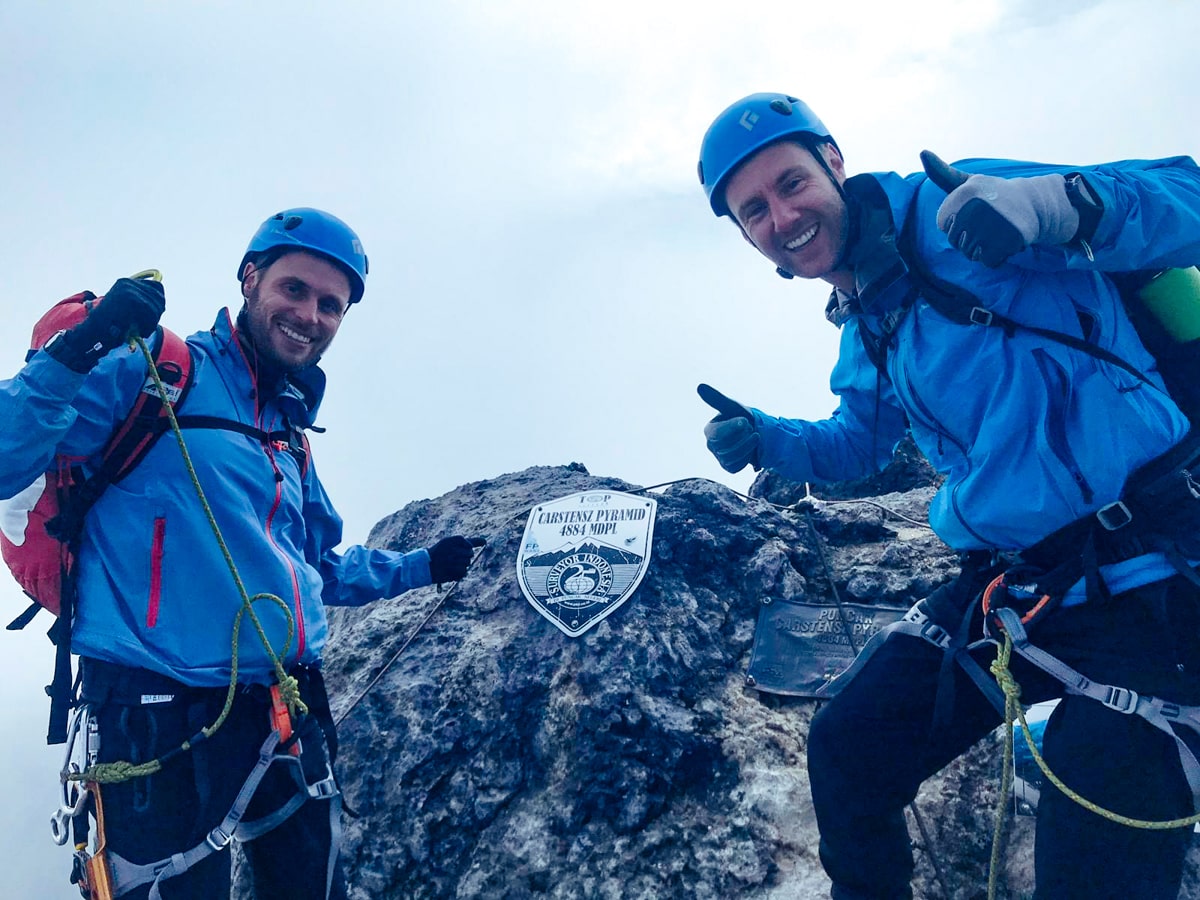

This was a different kind of mental challenge on a mountain and a refreshing (yet frightening) one for me. It was less about slogging through mental pain with physical endurance and more about problem-solving, staying in the “flow” zone and not panicking in terrifying moments.
I felt extremely vulnerable up there, but the experience of respecting the mountain was really good for me and will serve me well for future climbs.
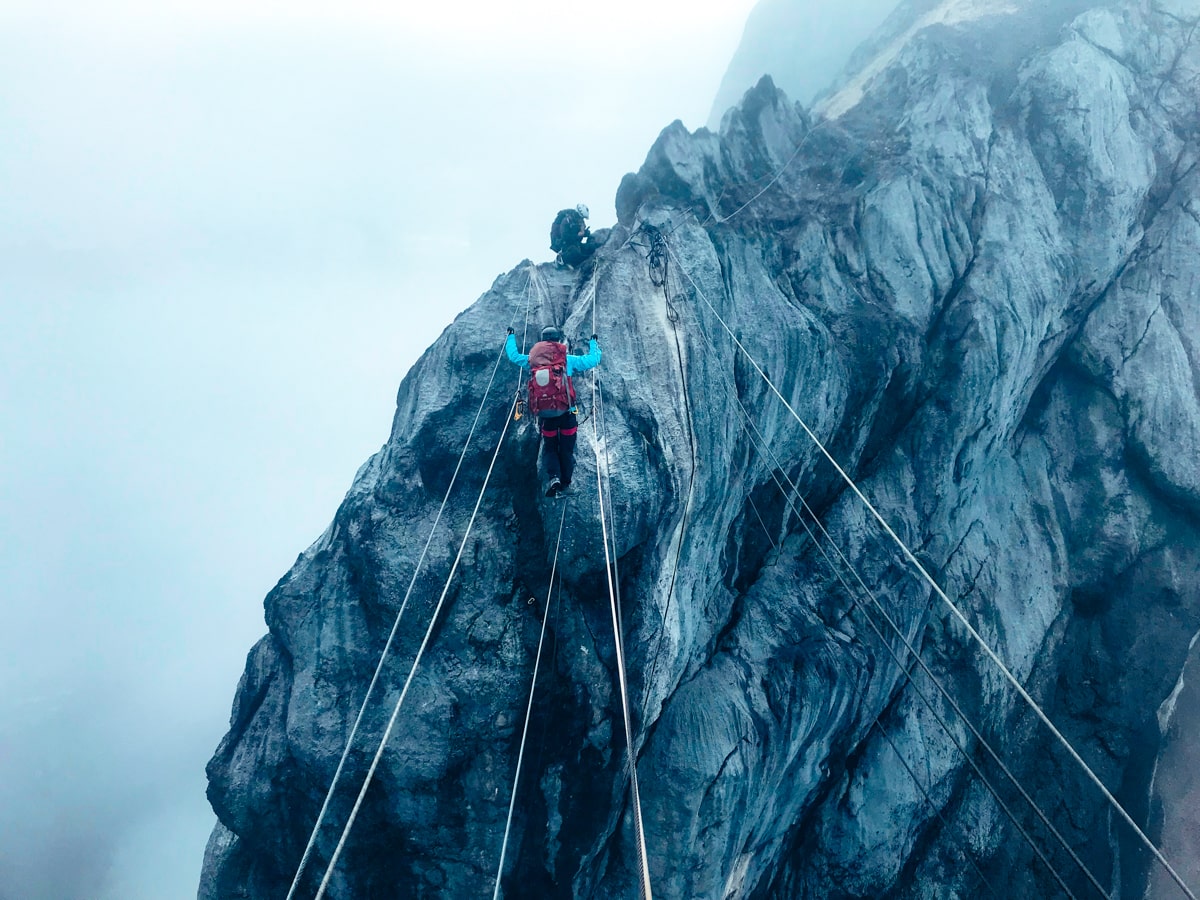
A couple of slips and 7 hours later we were back at base camp, my confidence growing after the humble sandwich force-fed to me by the mountain.
After successfully climbing Puncak Jaya, we headed to Australia to climb Kozzie, so we could say that we had 100% climbed the tallest mountain in the whole of Australia with absolutely no contention.
Before you head to West Papua:
- If you’re into climbing mountains in Asia then also check out these Climbing Mount Kinabalu Tips, everything you need to know about toppling the tallest mountain in Borneo. Good luck with your climbs
- Adventurous man? This post is for you: Best Men’s Travel Gear: Tried & Tested Over 10 Years!

